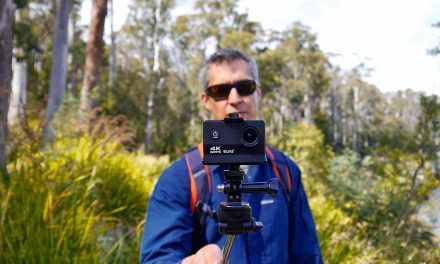As nice as it is to disconnect sometimes, not every outdoor trip has to be without technology. Gone are the days of having no power during a camping trip. With a portable power station, you can access your devices and use any small appliances you bring. You might even feel safer when you’re out in the wilderness with power to charge your phone. This article will cover how to choose a portable power station for your camping trip in the great outdoors.
Battery Capacity
Battery capacity will determine the type of appliances the portable power station can charge. The higher the battery capacity, the greater the station’s output. If you plan on juicing up small devices like laptops, tablets, and mobile devices, an output of about 1,000Wh battery capacity should more than suffice. However, for those planning to bring along an electric cooker or portable fridge, consider choosing one with a 1-500Wh battery capacity.
Charging Options
However, that’s not always convenient. We recommend looking for a portable power station with USB, AC, and solar power charging. With solar-powered stations, it can be juiced up even if you’re in the middle of nowhere.

Portability
Unlike the gas-counter parts, electric power stations are quite portable and mobile. That’s because they use a compact battery. We recommend choosing the lightest possible option if you plan to travel to different camping sites. Power stations designed for camping can weigh as little as 1kg, and some reach up to 36kg.
Output and Surge Capacity
Portable power stations feature two output ratings: output capacity and surge capacity. The output capacity tells you the power it can supply from beginning to end. In contrast, surge capacity defines the maximum power it can generate for a short period.
You’ll only need to look at the surge capacity for powering everyday gadgets. However, power-hungry appliances like a fridge need a high output capacity.
Number of Outlets
Power stations vary in the number of available outlets. Some stations have as little as one outlet, while others have more than eight. Before camping, determine how many devices you need to charge and estimate how long they take to recharge.
Safety Features
The best power stations have high-tech safety features to prevent potential harm to your devices. These features may include:
- Overload protection: This function automatically stops charging your devices when they are fully charged. Additionally, it avoids the potential consequences of charging your devices overnight.
- Automatic shutdown: It detects when the battery capacity has reached the minimum storage level, which helps prevent deterioration in the device.
- Internal temperature gauge: This prevents overheating by maintaining a safe temperature at all times
Add-Ons
Similar to safety features, many of the best power stations may come with add-ons that make the device more convenient.
- Pass-thru charging: This feature allows the station to charge your gadgets as it’s recharging themselves.
- Auto-shut-off: It automatically shuts the station down when it’s not in use or has a low battery.
- MPPT charge controller: This helps reduce the charging time when paired with a compatible solar panel.
- Battery management system: This system uses low-battery protection, allowing the battery to last for hundreds of cycles.
Battery Type
You’ll find three types of portable power stations on the market:
- Electric: These stations run on a battery which can be recharged through an electrical outlet. The problem occurs if camping for long periods where an outlet isn’t nearby.
- Gas-powered: Gas-powered stations are incredibly powerful and can juice dishwashers, electric pumps, and power tools. However, they are bulky and not easy to move around.
- Solar-powered: These stations allow for pass-thru charging so that the sunlight can recharge the station while passing through electricity to the connected gadgets. Many solar-powered stations offer multiple ways to charge the device, making them the best option for camping enthusiasts.
Final Thoughts
With our buyer’s guide, you’ll be able to quickly evaluate the different portable power stations in the market and determine which one fits your requirements. Now you’re ready to head off camping while ensuring all of your devices and appliances can be fully powered up.





